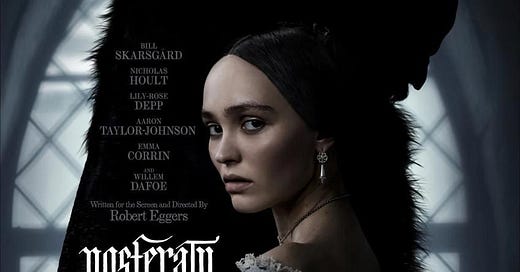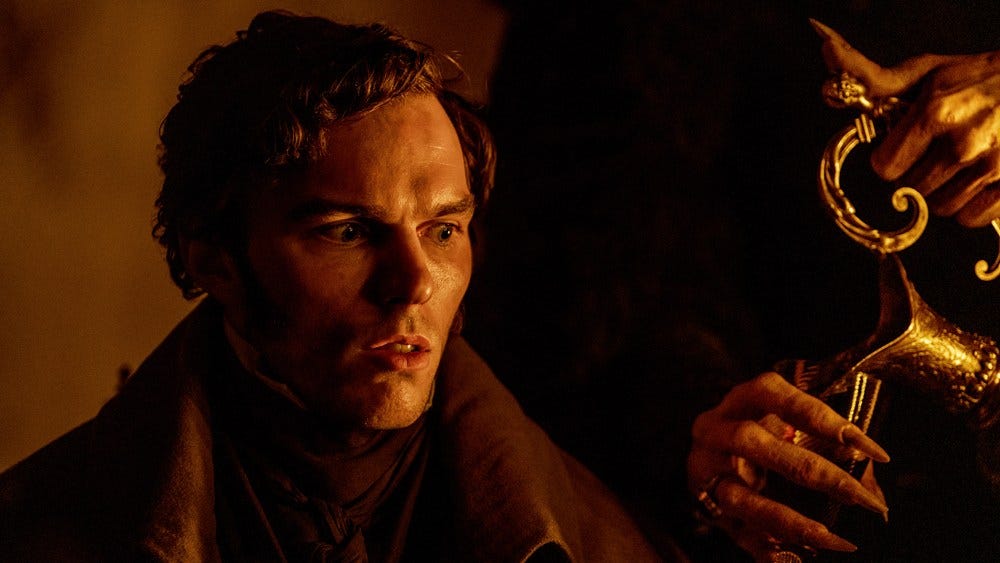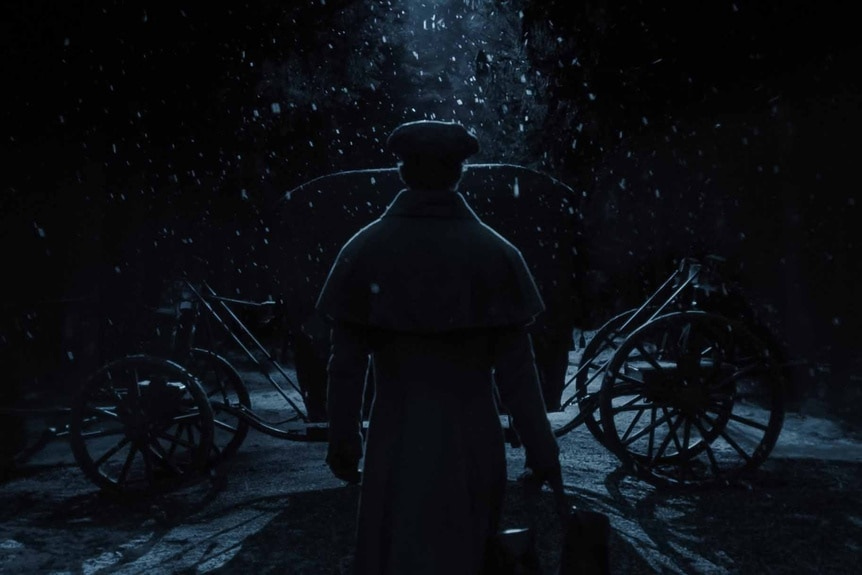Since its birth, the myth and legend of the Vampire has never not been irresistible to us mortals and throughout history film and literature have happily played within the dark and dangerous waters of gothic horror.
Based on the 1922 German silent film Nosferatu: A Symphony of Horror, which itself was an unofficial and unauthorised adaptation on Bam Stroker’s Dracula, the infamous Count Orlok returns in Robert Eggers’ latest cinematic horror installment Nosferatu.
During her adolescence, newlywed Ellen (Lily-Rose Depp) made a desperate and naive oath to a malevolent entity to submit to him for eternity if he were to comfort her during the loneliness of her upbringing.
Years later in 1838, Ellen’s new husband and estate agent, Thomas (Nicholas Hoult), must now travel to a mysterious stately home in Wisborg to meet eccentric recluse Count Orlok (Bill Skarsgård), who is interested in buying a home that will give Thomas the financial security he is desperate to secure for Ellen.
Ellen begs her husband to stay with her, fearful that she is having wild and violent dreams of death but Thomas must depart and, as he does, triggers a most horrifying and deathly sequence of events that leave Ellen vulnerable to that mysterious entity whom still longs for her submission.
Nosferatu reeks of death in a visceral sense and it is utterly intoxicating. The entire film is death upon screen. For us mere mortals, the fear and anticipation of our death is a shadow for which follows our every move. We cannot escape it. It is both inevitable and, so often, beyond any real comprehension, and therefore it is irresistible to us.
Nosferatu, both aesthetically and thematically, looks at what happens to us when we fear a violent, bloody death and questions the inevitability of our melancholic acceptance of it. Can we ever avoid the evils with which ‘the other’ use to own us and, in the end, do we really want to?
Not only is there a plethora of visual reminders within each scene that connote the ever looming threat of death, Eggers uses shadow and silhouette to set an atmospheric tone of utter doom and deathly peril.
Whether that is Count Orlok's looming silhouette crawling across the town's rooftops or the encroaching shadows within the castle that threatens to swallow Thomas whole, the low-key lighting and position of shadow helps to drag audiences down into the murky, filthy world that is Nosferatu’s nightmare.
There were several moments throughout the film wherein which the beauty of Eggers’ world building and the idyllic mise-en-scene evoked a knee-jerk smile of pleasure, despite the horrors being depicted on-screen.
The film is richly visually pleasing and it is not difficult to see how passionate Eggers is in ensuring that a sense of visual splendour is used to provoke his audience into a strange, fearful sense of awe; similar to his work within The VVitch and The Lighthouse.
There are several shots that display a beautiful sense of symmetry on-screen that give the dark visuals an almost painterly sense of beauty. Combining Jarin Blaschke stunning cinematography and the beautifully thought-out composition on-screen, Nosferatu becomes not only an engrossing yet classic narrative but a intoxicatingly atmospheric piece of art.
There is, of course, also the classic theme of sexual repression simply bursting from the very seems of Nosferatu’s making. We might look upon Ellen’s affliction and her satanic binding to Count Orlok as a representation of how her budding sexuality was harshly demonised in adolescence and therefore her own contradictory feelings of great shame and elicit pleasure violently clash within her as an adult.
Might this be further represented by the ways in which Count Orlok’s calling to Ellen leads her to experience full-body and facial contortions; Ellen writhes in her bed, violently arching her back and repeatedly moaning “he is coming” in a way that connotes both pleasure and pain. She also admits that within her dreams, where she is finally able to submit to Count Orlok, it is the happiest she has ever felt, despite the desolation that surrounds them.
So much of gothic horror as a genre, be it through page or screen, revolves around the deep yearning to leave behind normalcy and escape from oneself within a more morbid and darkly exciting reality.
This is especially apparent within the gothic horror/vampire hybrid-genre, with an added emphasis on the sexual awakenings of young women and their burning desire for that which they know will lead to their downfall.
Ellen’s character fits into this theme perfectly as we see the full spectrum of feelings she holds for Count Orlok. There is the initial comfort and desire she receives from her ungodly savior, the disgust that she feels for her unnatural yearning, the hope she see’s in Thomas for her salvation, a melancholy acceptance of her binding to evil and a vehement hatred for he who demands her submission.
Lily-Rose Depp does an impressive job at encompassing the many emotions that run through Ellen’s character and gives a physically arresting performance. Depp enables us to believe in the exhaustion that Ellen experiences from Count Orlok’s otherworldly presence within her soul and she commits fully in portraying the extensive and immense abuse the dark Lord rages on her body.
Alongside Depp, there are plenty of other brilliant performances to enjoy. Hoult, Willem Defoe, Aaron Taylor-Johnson and Ralph Ineson all play great roles and each give varying depictions of men's reaction to Ellen's terrible sickness.
Playing Orlok himself, Bill Skarsgård is such an impressive performer and takes this infamous villain and makes him very much his own. Much like his previous depictions of Pennywise the Clown in IT, Skarsgård brings such intensity and menace to the screen that it is very easy to forget that there is an actor underneath all that looming threat.
Eggers is a director that clearly loves the horror genre and we can see how he enjoys splicing it with specific sub-genre’s within his other work e.g. folk horror and Norse mythology.
While The VVitch is a personal favourite, if we look at his 2022 historical epic The Northman, which was ambitious in scope and subject but perhaps flawed in execution, it works as a great indicator as to the directors vision and intentions for his future work and one might argue that Nosferatu is the result of such progress.
Nosferatu’s gothic aesthetic might not be the right taste for some horror fans but for those who love the vampire sub-genre, themes of the occult and cultish mystery, Eggers’ newest release may well be their favourite story to obsess over.









Obsession. Possession. Infection... This films offers so many potential strands to pull on, one scarcely knows where to begin. You did it great justice with your review. Well done.
I think you’d enjoy Walter Chaw’s review. He’s such a tremendously erudite writer on cinema. https://filmfreakcentral.net/2024/12/nosferatu-2024/